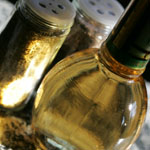A CLEAN ESTABLISHMENT AND FOOD SAFETY
Keeping your establishment clean and sanitary at all times, makes it more pleasant for customers to visit and a better place in which to work. Good cleaning habits can break the chain of infection from the source of the disease to the customer and employees.
Posting and following daily cleaning schedules can increase cleaning efficiency.
Cleaning should be done during periods when the least amount of food is exposed, such as after closing. This does not apply to cleaning that is necessary due to spills.
Keep floors repaired and clean.
Keep walls, ceiling, windows, screens, doors, and light fixtures clean and in good repair.
Keep screens on windows, doors, and outer openings closed and in good repair.
Keep exhaust fans, filters, and hoods in good working order and clean of dust and grease.
Clean rest rooms and fixtures daily.
Prepare and store food in clean, dry places.
Loading zones and garbage areas should be kept clean, and free from trash for pest control and safety.
Purchase equipment that has been approved by an accredited third party.
Follow manufacturer's instruction for equipment installation, use, care, and cleaning.
Keep counters, shelves, hoods, and sinks clean and free from dust, dirt, insects, and other contaminating material
Clean can openers daily.
Replace nicked or dull cutting blades
Clean dish machine daily. Remove, wash, and rinse tubes, making sure that openings are not clogged. De-lime machine as needed.
Keep microwave ovens clean.
Keep air temperature in all parts of the refrigerator at 41◦F or below.
Install drain lines with air gap before going into sewers
Follow the manufacturer's instructions for cleaning and sanitizing soft ice cream or milk shake machines
Deep fat fryers, ovens, stove, ranges, mixers, peelers, and similar equipment should be cleaned daily.
